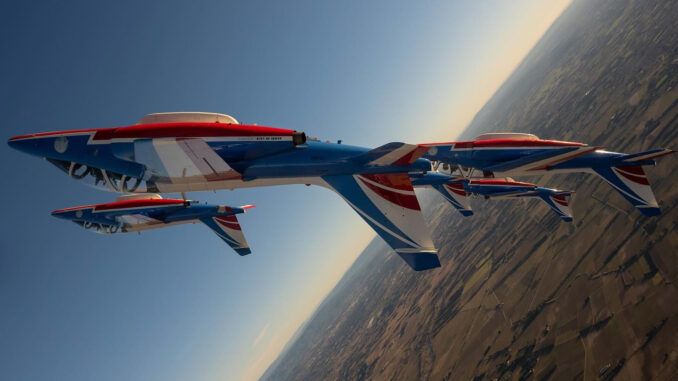
Discover the risks of aerobatics, from G-acceleration to breakdowns, and how expert pilots minimize these dangers.
The risks of aerobatics: everything you need to know
Aerobatics, a spectacular and demanding discipline, involves the execution of complex and precise aerial figures, requiring a high level of technical skill. However, this fascinating activity is not without risks for pilots and passengers. This article explores these risks, from physical and technical aspects to human factors, in order to better understand and limit the dangers inherent in aerobatics.
Discover the risks associated with aerobatics, including physical, technical and human hazards. This article explores the effects of extreme acceleration, equipment failure and pilot error, offering tips for safer practice. Learn how to limit the risks of aerobatics for a safe and spectacular experience.
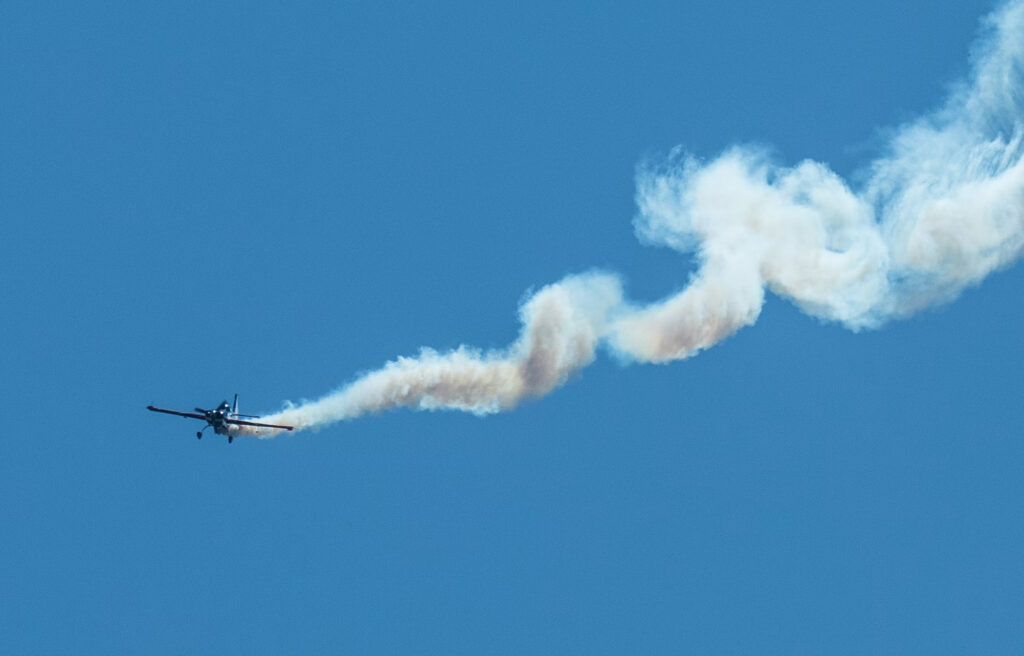
Physical risks of aerobatics
Acceleration (G)
Accelerations in aerobatics, measured in multiples of Earth’s gravity (G), are dynamic forces resulting from fast, complex maneuvers such as loops, tight turns and steep climbs and descents. When these forces exceed normal gravity, they exert considerable pressure on the pilot’s body, affecting blood circulation, internal organs and the ability to maintain consciousness.
Understanding G forces
- Positive acceleration (Gz): When the force is directed upwards and downwards, it pushes blood towards the pilot’s feet. High levels of positive G can lead to tunnel vision, gray vision (partial loss of vision) and eventually loss of consciousness (G-LOC), as the brain receives less oxygen.
- Negative acceleration (-Gz): Conversely, a negative force pushes blood towards the head, which can cause headaches, eye damage and, in extreme cases, hemorrhaging.
Physiological effects
- G-LOC: G-induced loss of consciousness occurs when the brain does not receive sufficient oxygen. Before a G-LOC, the pilot may experience tunnel vision, reducing the field of vision due to reduced blood supply to the retina.
- Fatigue: High G-forces require considerable physical effort to fight gravity, which can quickly lead to muscle fatigue.
- Cardiovascular system: To counter the effects of G-forces, the heart has to pump harder to maintain the blood supply to the brain and vital organs, which can be particularly challenging during prolonged or repeated exposure.
Management techniques
- Anti-G maneuvers: Pilots are trained to perform anti-G maneuvers, such as tightening lower body muscles and using specific breathing techniques, to maintain blood pressure and reduce the risk of G-LOC.
- Anti-G suits: This specialized equipment helps counter the effects of acceleration by exerting external pressure on the body, thus helping to maintain blood flow to the upper body and brain.
- Training and conditioning:** Regular physical training, focusing on cardiovascular and muscular strengthening, improves the body’s resistance to G-forces.
Violent maneuvers
Violent maneuvers can lead to injury to muscles and joints, especially without proper training and preparation.
Violent maneuvers in aerobatics involve rapid changes of direction and speed, subjecting the pilot’s body to extreme forces. These forces, combined with the pressure exerted on the body during sudden, intensive movements, can cause significant stress to muscles, tendons and joints. The effects of these stresses can range from mild muscular pain to more serious injuries such as muscle tears, sprains or even fractures in the event of violent impact against aircraft controls or the cockpit interior.
Mechanisms of injury
- Compression and stretching: During climbs, descents and tight turns, the forces acting on the body can compress certain parts while stretching others, potentially leading to musculoskeletal injuries.
- Impact: An unexpected maneuver or abrupt correction can cause the pilot to impact directly against the interior of the aircraft, resulting in contusions or more serious injuries.
- Repeated overloading: The repetition of extreme maneuvers without adequate recovery can lead to overloading of muscles and joints, resulting in tendonitis or premature wear and tear.
Injury prevention
- Specific physical training: Targeted training, aimed at strengthening the muscles of the trunk, neck, arms and legs, can help to better withstand the forces experienced during maneuvers. Flexibility and balance exercises also help reduce the risk of injury.
- Protective equipment: The use of adapted seats and harnesses can limit excessive movements and provide better support during intense maneuvers.
- Flight preparation and planning: Careful planning of aerobatic sequences ensures that maneuvers flow smoothly, reducing the risk of accidents or unexpected sudden movements.
- Hydration and nutrition: Good hydration and a balanced diet are essential for maintaining muscular performance and resilience in the face of physical stress.
- Rest and recovery: Allowing sufficient time for recovery between aerobatic sessions is crucial to allow the body to repair and strengthen itself, thus avoiding the accumulation of fatigue and stress on muscles and joints.
All this helps to reduce the risks of aerobatic flying for pilots.

Technical risks of aerobatic flying
Engine failure
Engine failure during an aerobatic exercise presents a critical challenge to the pilot, due to the complexity of the maneuvers and the unique constraints of the aerial environment. In aerobatics, aircraft often operate at relatively low altitudes, executing maneuvers that require precision and control. In the event of engine failure, the pilot must react quickly to minimize risk and ensure a safe landing, despite limited options.
Aggravating factors
- Limited altitude: Aerobatics is generally performed at low altitude for reasons of visibility and spectacle, reducing the time and space available to react to engine failure and plan an emergency landing.
- Speed and orientation: At the moment of failure, the aircraft may be in full maneuver, at high speed or in an unfavorable orientation (inversion, spin, etc.), making it difficult to regain control and stabilize the aircraft.
Reacting to and managing an engine failure
- Rapid assessment: The pilot must quickly assess the situation, including engine condition, available altitude, and proximity to potential landing fields or safe areas for an emergency landing.
- Regaining control: Priority is given to stabilizing the aircraft in the glide position to maximize control and extend reaction time. This often involves recovering a stable flight attitude and adjusting speed to that of the best glide.
- Emergency procedures: The pilot must follow pre-established emergency procedures to attempt an engine restart, if deemed possible and safe, depending on altitude and time available.
- If restart fails or is not possible, the pilot must identify the best possible landing site, taking into account obstacles, wind and other environmental factors. Communication with the emergency services can also be initiated if possible.
Training and preparation
- Specific training: Aerobatic pilots are trained to deal with engine failure and other emergencies. This includes practicing emergency procedures, becoming familiar with the gliding characteristics of the aircraft, and simulating emergency landings.
- Preventive planning: Before each flight, careful planning and risk assessment can help prepare the pilot to react effectively in the event of engine failure. This includes knowing the safe areas for an emergency landing close to the flight area.
Engine failure in aerobatics requires calm, methodical and rapid management by the pilot to overcome the challenges posed by the emergency situation. Training, preparation and familiarity with the aircraft are essential to maximize the chances of a safe outcome in the event of engine failure during aerobatic flight.
Instrumentation failure
Instrumentation failure can disorientate pilots, especially in low-visibility conditions, increasing the risk of pilot error.
An instrumentation failure in the context of aerobatics can have critical implications for flight safety. On-board instrumentation provides vital information on altitude, speed, aircraft orientation (including attitude and heading), and other parameters essential for safe and accurate piloting. In aerobatics, where maneuvers are performed at high speeds and often close to the ground, instrument reliability is paramount.
Impact of instrument failure
- Spatial disorientation: Without reliable feedback from the instrumentation, the pilot can rapidly lose his perception of the aircraft’s orientation, leading to spatial disorientation. This is particularly dangerous in aerobatics, where fast, complex maneuvers can disorientate even experienced pilots.
- Low-visibility conditions: When flying in conditions where external visibility is reduced (such as clouds or twilight), reliance on instruments is increased. A failure in these circumstances can make it extremely difficult, if not impossible, to maintain controlled flight.
- Increased risk of pilot error: Without accurate data on flight parameters, the pilot is likely to make decisions based on incorrect assumptions, significantly increasing the risk of accidents.
Management strategies
- Training and practice: Aerobatic pilots are trained to recognize and manage instrumentation failures, including flying with a minimal set of information. This may include using visual piloting techniques or learning to interpret external signs and physical sensations to assess aircraft attitude and performance.
- Redundant systems: Many aerobatic aircraft are equipped with redundant instrumentation systems to minimize the risks associated with failure. This may include back-up mechanical instruments for critical data such as altitude, speed and orientation.
- Emergency procedures: Pilots have specific emergency procedures for instrument failures, which may include immediate return to a safe airport or flight area where a visual approach and landing is possible.
- Preventive maintenance: Regular and rigorous maintenance of instrumentation systems is essential to minimize the risk of failures. This includes thorough pre-flight inspections and periodic checks that all instruments are working properly.
Instrumentation failure represents a major challenge in aerobatic flight, requiring adequate preparation, rigorous training, and a thorough knowledge of emergency procedures to ensure flight safety. The ability to react effectively to such a failure can make the difference between a minor incident and a serious event.
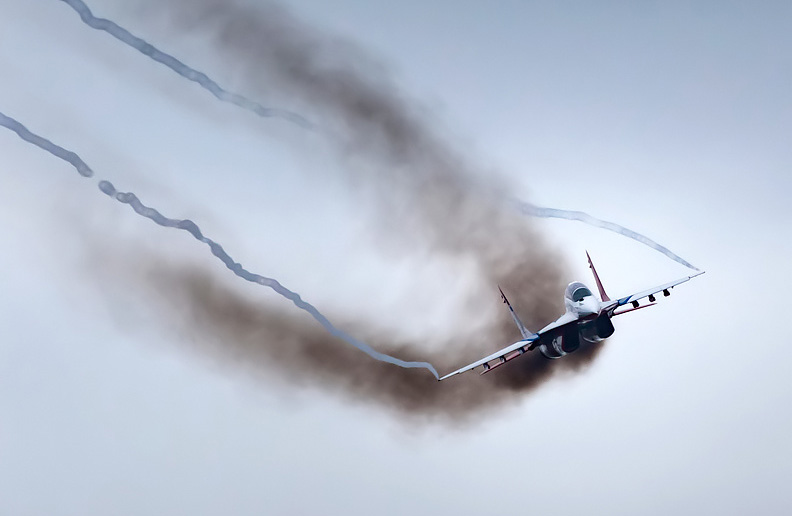
Human risks in aerobatics
Human risks in aerobatics encompass a variety of factors that can affect pilot performance and lead to critical situations. These risks, although intangible, are just as significant as the physical or technical ones, and require special attention to ensure flight safety.
Pilot error
Pilot error is often the result of misjudgment, lack of knowledge or incorrect execution of flight techniques. In aerobatics, where maneuvers have to be performed with precision and with often reduced safety margins, a simple error can have serious consequences.
- Misjudgment: A misjudgment of weather conditions, aircraft condition, or the airspace required to perform a maneuver can lead to a dangerous situation.
- Improper execution of maneuvers: Inappropriate technique, such as poor timing or control coordination, can lead to loss of control or unplanned deviation from the flight path.
Inexperience
Inexperience is a significant risk factor, particularly in aerobatics, where learning and mastering advanced skills are essential.
- Overestimation of ability: Inexperienced pilots may overestimate their ability to handle complex situations or difficult maneuvers, potentially leading them to take unnecessary risks.
- Poor risk assessment: Without the necessary experience, pilots may fail to recognize or misjudge the dangers associated with certain flight conditions or maneuvers.
Fatigue
Fatigue, though often underestimated, plays a significant role in human performance and flight safety.
- Impact on decision-making: Fatigue can impair judgment, slow reaction time and diminish the ability to make quick, accurate decisions, essential in aerobatics.
- Decreased concentration: The ability to stay focused and maintain a high level of vigilance is crucial to flying. Fatigue can considerably reduce this ability, increasing the risk of error.
Mitigation strategies
To mitigate these human risks, several strategies can be adopted:
- Training and education: A rigorous training program, focused on mastery of flying skills and decision-making, is essential to prepare pilots to manage the challenges of aerobatic flying.
- Progressive experience: Encouraging the acquisition of experience in a gradual manner, starting with simple maneuvers before progressing to more complex exercises, helps to develop competence and confidence without taking unnecessary risks.
- Fatigue management: Implementing fatigue management policies, including guidelines on sufficient rest periods and recognizing signs of fatigue, can help prevent the negative impact of fatigue on flying.
Recognition and management of human risks are essential to ensure safety in aerobatics. A proactive approach, focused on pilot training, experience and well-being, is crucial to minimizing these risks and promoting safe, responsible aerobatic flying.
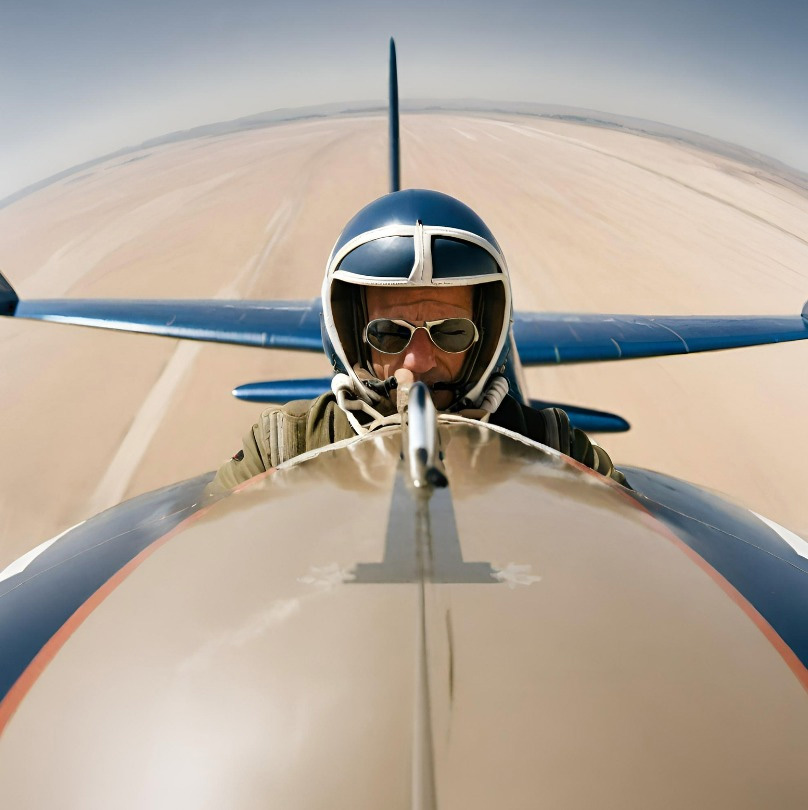
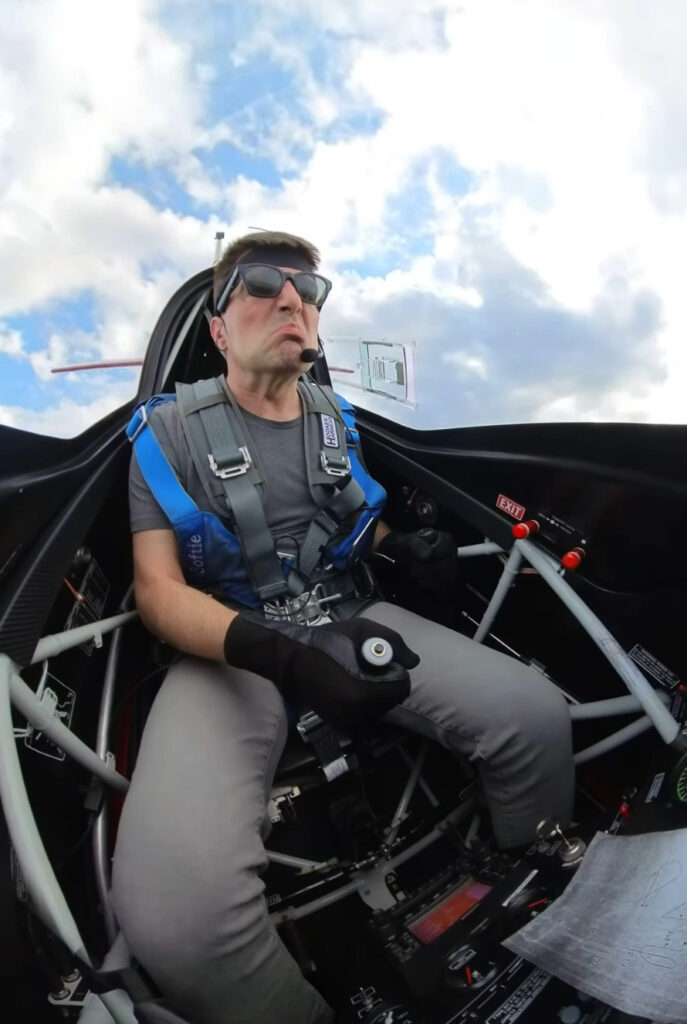
Aerobatics is undeniably a high-risk activity, exposing pilots and passengers to a variety of physical, technical and human hazards. Knowledge and understanding of these risks are essential to limit them effectively. It is recommended to undergo rigorous training, to perform meticulous aircraft maintenance, and to always assess the weather conditions before the flight. In this way, aerobatics can be practised with maximum safety and minimum risk.
War Wings Daily is an independant magazine.